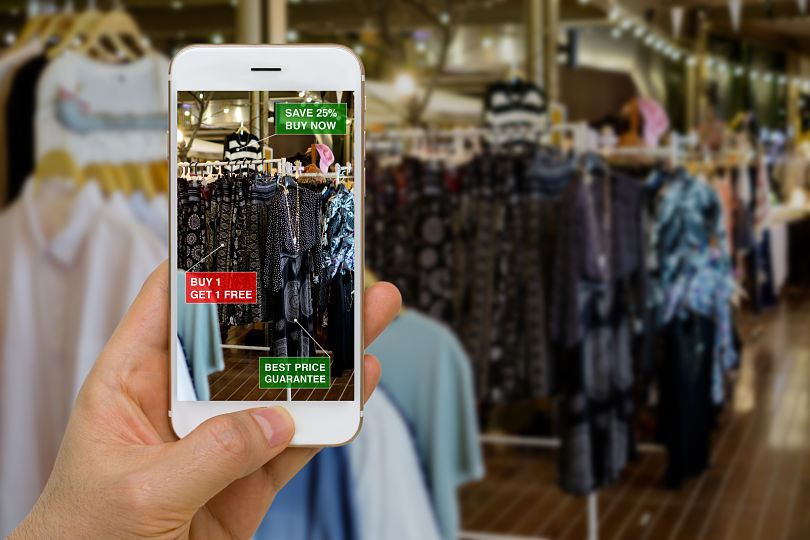How beauty brands are using augmented reality to engage customers and drive return purchases
Source: LSRetail
With the growth of e-commerce, the increasing influence of social channels and the emergence of independent beauty brands, the beauty industry has evolved into a highly competitive playground of companies fighting for market share. Women (and men! In just a few years, the male grooming industry has bloomed into a multi-billion dollar industry) are spending more on beauty products than ever, and relying on non-traditional channels to discover and select new items and brands.
Fabrizio Freda, president and CEO of Estée Lauder, believes this to be a generational change that is not likely to disappear: “The younger generations are defining the culture with images of self-expression. They take more pictures in a day on average than their parents took in a year.”
The modern beauty consumer is different from the traditional one: he or she values authentic brands and wants to purchase high-quality products. Using organic ingredients that are good for the skin and the environment is becoming an increasingly mainstream concern. Today’s shoppers take the time to learn about new products and benefits through different channels, both official and user communities, and they don’t hesitate to share their impressions and preferences through product reviews.
In response to this behavioral shift, beauty and health brands have had to find new ways to engage consumers in-store and online.
Technology has been leading the charge in helping convert modern shoppers, build brand loyalty, and keep them coming back. Augmented reality (AR) is a technology that is being used by many retailers to overlay virtual items into the real world. For beauty retailers, AR is transforming the traditional experience of trying on makeup looks and new products. Shoppers can now try, evaluate and purchase products quickly and easily from anywhere. It’s fun, it’s engaging – and it solves a pain point that many consumers face when buying makeup: “how will it look on my complexion?”
“75 of the top 100 beauty brands are now using AR globally to change how products are marketed to and tried on by consumers,” says Parham Aarabi, CEO at ModiFace, a technology company specialized in AR.
Most of the big names, including L’Oréal, Maybelline, Yves Rocher, Smashbox, CoverGirl, Rimmel London, and more, today offer apps that, through AR, let customers virtually try on makeup products via their mobile camera.
Here are the three top ways the best-known health and beauty retailers are using AR technology to engage consumers:
1. Educate
For a consumer, purchasing a new beauty product online can be a tough decision. Makeup products can be pricey – and how will I know if this color of lipstick will suit my skin tone, or go well with my eyeshadow, just by seeing a swatch online? Capitalizing on a desire for knowledge and information, beauty brands are using AR technology to give their users an opportunity to get in-depth information on products – and to try out what different products would look like on their own face.
Sephora’s “Virtual Tutorial” is an AR application that provides the viewer with instructions for a step-by-step makeover using their face as the canvas. Each tutorial walks users through what products they will need to achieve the look, and also offers personalized product recommendations as consumers progress through the guided instructions.
Lancôme’s AR-powered app enables viewers to access exclusive live streams where makeup experts demonstrate how to apply the products and create popular looks.
By using AR as a learning tool, brands are trying to eliminate any product uncertainty and making their shoppers feel confident and happy about their purchase.
2. Personalize
Today’s consumers value self-expression and individuality, and favor brands and products that help them showcase their uniqueness.
Sephora is using its Virtual Artist app to help fulfil this need . The app uses AR to provide personalized product recommendations that match the viewer’s skin tone and preferences.
Estée Lauder’s Lip Artist is a Facebook Messenger bot that helps consumers find the perfect lipstick shade. Just upload a picture of yourself, and watch as the app applies the lipstick to your photo.
Shiseido’s TeleBeauty, created in collaboration with Microsoft Japan, is an app that automatically corrects skin tone and applies digital makeup to the face during Skype video calls. The goal? To support telecommuting workers who wish to look flawless during online meetings – but don’t want to waste time applying makeup for a short video call.
By using AR to personalize the beauty experience, brands are engaging today’s consumers and driving brand loyalty.
3. Entertain
From children’s dress-up to style makeovers, makeup has always been intrinsically connected with fun. Today’s consumers are no exception.
In occasion of its 20th anniversary as the official Cannes Film Festival partner, L’Oréal Paris used its AR app to entertain users with 64 film-inspired, AR-powered makeup looks. The glamorous styles were delivered through a series of live broadcasts straight from the festival. This exciting experiment marked the first time non-festival goers could use technology to experience the Cannes red carpet from home, and interact with it.
Sephora has recently launched AR technology in-store, with a new store concept called Beauty TIP (Teach, Inspire, Play). With iPads placed throughout the store, shoppers can play with new products and looks, virtually – no makeup remover and tissue box needed.
In an industry that profits from vanity and perfection, AR can help beauty brands tap into a sense of fun and wonder – necessary to reach and engage younger generations of shoppers.
Keep your customers coming back with innovative technology
Today’s consumers are living much of their lives in a virtual, online world where information can be accessed with just a click. Many of the major beauty brands have understood that innovative technology like AR can help bridge the gap between virtual and physical, and help deliver the kind of experiences that make modern consumers excited – and loyal.
